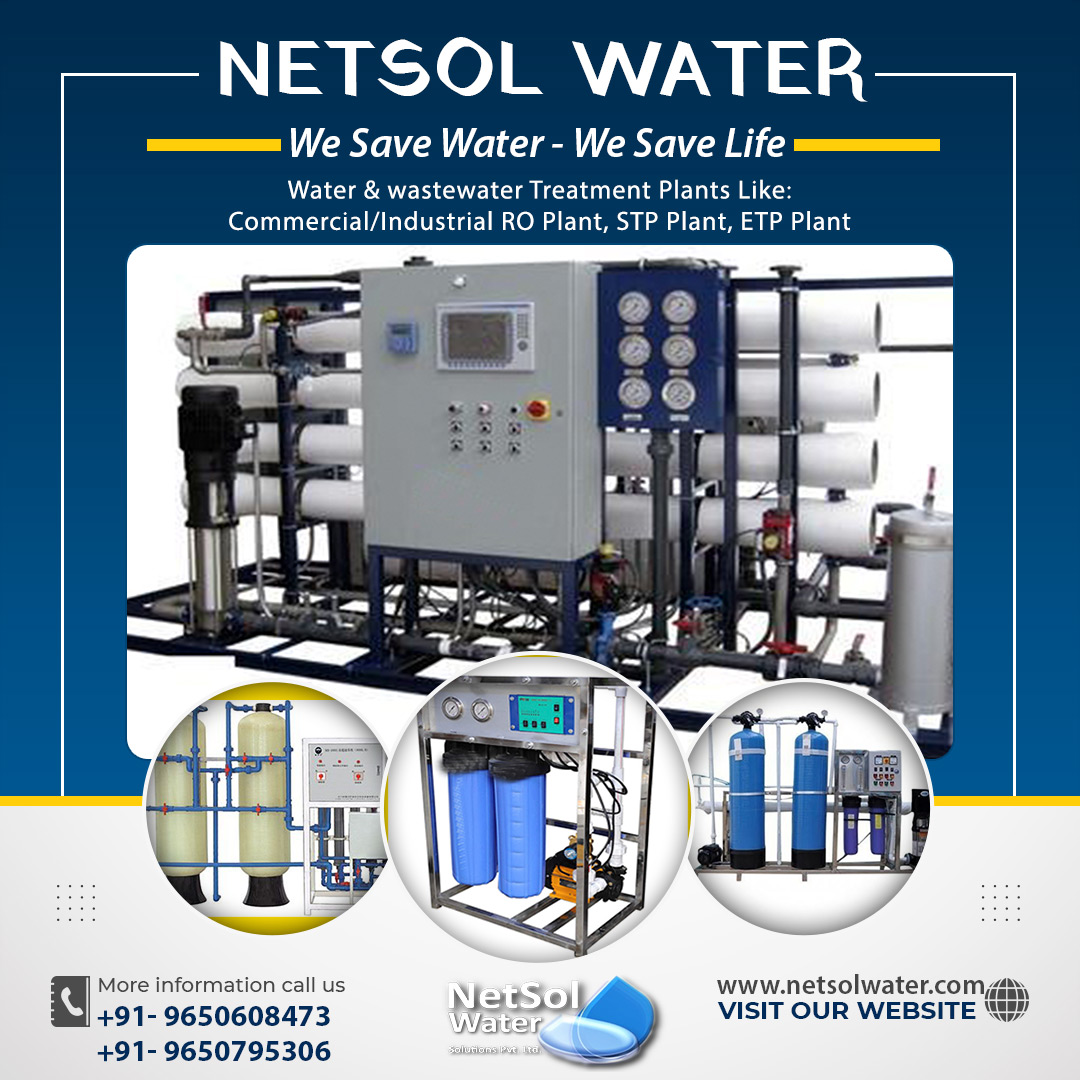What are the Components of Industrial RO Plant?
Clean water is a critical utility for countless industrial processes and manufacturing operations. As freshwater resources become increasingly strained and environmental regulations tighten discharge limits, more companies are turning to advanced water treatment like reverse osmosis (RO). An RO plant enables facilities to utilise alternative lower-quality water sources like brackish, recycled process streams, or even treated municipal wastewater. By removing dissolved salts, organics, and other contaminants through a membrane separation process, RO systems produce high-purity water ideal for industrial uses.
We'll cover the basic concepts, components, and design considerations for implementing an industrial RO plant.
Reverse Osmosis Process Fundamentals
At its core, reverse osmosis is a membrane filtration technology leveraging the natural difference in osmotic pressure between concentrated and dilute solutions. By applying pressure greater than the osmotic pressure, the RO membrane allows the passage of water molecules while rejecting most dissolved and suspended solids.
The semi-permeable RO membranes are arranged into spiral-wound elements consisting of flat membrane sheets wrapped around a perforated central tube. Multiple elements are housed within fibreglass or stainless-steel pressure vessels designed to withstand high operating pressures of up to 1,000 psi. As feed water enters one end of the pressure vessel, the applied pressure forces a portion through the membranes, forming freshwater permeate. At the same time, the concentrated reject stream exits the other end.
RO membrane performance and longevity rely heavily on maintaining proper water chemistry, pretreatment, and operating parameters. Factors like pH, temperature, fouling, and scaling all impact permeate quality and production rates over time. With proper design, operation, and scheduled cleaning, RO membranes can provide years of reliable service, producing a high-quality industrial water supply.
Key Components of an Industrial RO System
A comprehensive RO plant consists of multiple process areas and equipment in addition to the membrane elements. Key components include:
Intake/Screening – Wells, surface intakes, or piping are used to bring raw feed water into the plant, along with screening for debris removal.
Pretreatment – Multi-stage filtration, softeners, clarifiers, chlorination, and dechlorination to remove particulates, hardness, metals, organics, and microorganisms that could damage membranes.
Cartridge Filters – Highly efficient cartridge filters provide final membrane protection by removing any remaining suspended solids down to 1 micron or less.
High-Pressure Pumps – Vertical turbine, multi-stage centrifugal or positive displacement pumps to pressurise feed water to 600-1000 psi needed for RO.
RO Membrane Array – Banks of pressure vessels containing spiral-wound membrane elements in series and parallel configurations.
Energy Recovery Device –Turbine or work exchanger units that recapture energy from the high-pressure concentrate stream to reduce pumping costs.
Disinfection – Ultraviolet, chlorination or other methods to sanitise permeate and prevent biological regrowth in distribution.
Clean-in-Place (CIP) System – Heated low or high-pH cleaning solutions, piping, and pumps to remove fouling off membranes periodically.
Storage Tanks – Atmospheric and ground storage tanks for permeate product water and CIP solution preparation.
Residual Management – Concentrate disposal facilities like evaporation ponds or discharge outfalls and associated pumping.
Overall, plant design carefully integrates each process area for optimised production capacity, simple operation, efficient maintenance, and future growth. Instrumentation like flow meters, pressure gauges, conductivity probes, and central control systems enable full monitoring and automation.
Industrial RO System Design Considerations
With industrial production and profitability relying on consistent water quality and availability, RO plant design is critical. System requirements are defined by factors like:
1- Raw Water Source – Origin, quality characteristics, seasonal variability, reliability of supply.
2- Production Capacity – Average and peak flow rates, redundancies for reliable operations.
3- Product Water Quality – Required purity level, specific contaminant removal needs.
4- Site Constraints – Space, topography, and climate conditions impacting layout and design.
5- Distribution – Plant location relative to usage points, storage and distribution needs.
6- Tie-Ins – Interconnections to other plant utilities like air, power, process water, and drains.
7- Chemical Handling – Dosing equipment for scale inhibitors, pH adjustment, and cleanings.
8- Residual Disposal – Approach for concentrating brine disposal meeting regulatory limits.
Additionally, future growth projections, production schedules, energy costs, and capital/operating budgets factor into the overall system sizing and design approach. Certain industrial facilities may require speciality membranes tailored to remove contaminants of concern or achieve ultrapure levels.
For industrial operations, a comprehensive design approach is essential to minimise membrane fouling, maximise membrane life, and provide reliable long-term operation with simplified maintenance requirements. Experienced professionals knowledgeable in industrial RO system specification are invaluable to avoid common oversights.
Conclusion
As water scarcity and environmental pressures continue mounting, RO technology provides a powerful solution for industrial facilities to access reliable, high-quality water supplies. Commercial RO plants enable processes like product manufacturing, rinsing, boiler feed, cooling tower makeup, and more to utilise brackish water, recycled effluent, or unconventional sources.
However, a properly engineered RO plant with appropriate pretreatment and residual handling is essential for long-term operations at industrial scales. By understanding the fundamentals of reverse osmosis membrane separation along with key system components, facilities can implement robust industrial water treatment, meeting all production water needs. With thoughtful design encompassing raw water quality, production flows, distribution, residual management, and process ties, RO enables consistent availability of industrial-grade water supplies. For manufacturers evaluating water source options, an industrial RO plant could be the ideal process investment.




